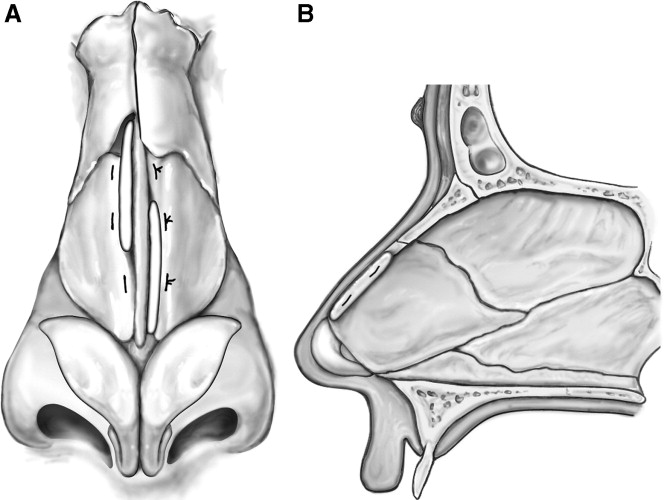A comparison study of insertion of spreader graft in the convex side in patients with deviated nose undergoing open septorhinoplasty
DOI:
https://doi.org/10.15419/bmrat.v6i3.531Keywords:
Concave, Convex, Crooked, Nose deviation, Rhinoplasty, Speader graftAbstract
Background: Correction of a crooked or deviated nose is a major challenge for rhinoplasty surgeons. In the present study we proposed to compare the aesthetic and functional results of unilateral grafting using spreader grafts on the convex side of the nasal deviation with those used on the concave side.
Methods: In this study, the technique and aesthetic and functional outcomes of the correction of crooked noses with spreader graft placement at either convex or concave side of the nasal deviation are presented.
Results: Unilateral spreader graft was used in 66 patients with C-type deviated nose. At the discretion of the rhinoplasty surgeon, the spreader graft was placed in the convex side of the nasal deviation in 33 patients (group A) and in the concave side of the nasal deviation in the remaining 33 patients (group B). During an average following-up period of 18 months (ranged from 8 to 36 months), there were no complications, infection, or graft extrusions. Functional evaluation was performed using a visual analog scale before and 4 months after surgery. Patients were asked to score their nasal breathing on a scale from 0 to 10. In group A (convex group), the mean preoperative score was 6.32+/-1.02 (ranging from 2 to 8), and the mean postoperative score was 2.03+/-1.01 (ranging from 0 to 4). In group B (concave group), the mean preoperative score was 6.76+/-1.10 (ranging from 2 to 8), and the mean postoperative score was 3.67+/-1.80 (ranging from 2 to 7). Patients with spreader graft at the convex side showed higher increase in angle measurements as compared to the patients with spreader graft in the concave side. Moreover, patients with spreader graft at the convex side were more likely to have excellent or good surgical outcomes (according to the degree of correction in the angle of deviation) as compared to patients with spreader graft in the concave side.
Conclusion: The use of the spreader graft is a safe and effective method for correction of crooked noses. We showed that speeder graft at the convex side of C-type nose deformity provided better aesthetic and functional results as compared to the placement of the speeder graft in the concave side of the nasal deformity.

Downloads
Published
Issue
Section
License
Copyright The Author(s) 2017. This article is published with open access by BioMedPress. This article is distributed under the terms of the Creative Commons Attribution License (CC-BY 4.0) which permits any use, distribution, and reproduction in any medium, provided the original author(s) and the source are credited.
